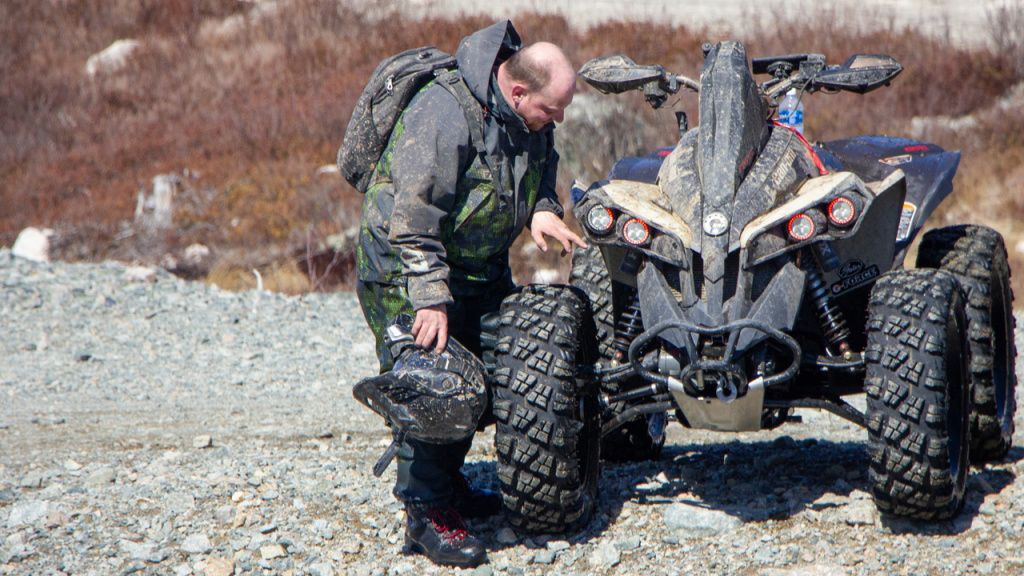ATV Lights Not Working
If you ride your ATV at night, your ATV lights not working completely upends your plans. It’s always unsafe and may be impossible to ride at night without properly functioning lights. Here are some tips on how to fix ATV lights so you can get riding again fast.

Diagnosing ATV Headlights Not Working
Make sure something is malfunctioning
It is very easy to think your headlights are malfunctioning when you simply aren’t familiar with how they work. If you are very familiar with your headlights, you can move on to the next step. If not, you might want to start here.
It is the norm to see ATV lights not working if the ignition isn’t in position 2. Your ATV may have an override switch, but you’ll need the owner’s manual to determine that. Read your manual before moving on to other troubleshooting steps.
Fuse
Fuses are easy to check and fix, so start there. You can find them under the dash panel and beneath the seat. They are marked, so you can easily tell which one goes to the headlights.
Make sure the fuse isn’t blown and that you are using the right fuse size. If you’ve just recently changed the fuse and it’s blown again, you might have a short in the circuit. That’s a bit more complicated, so it’ll be discussed below.
Relay
Your headlights probably have a light relay. If they do, there are several ways you can test it.
The simplest is to listen for a click. It will click when the headlights are first turned on and when you switch the lights between low and high beam. Not hearing a click is a definite sign that your relay is bad. Sadly, hearing one is not a guarantee that it is functioning properly.
If your ATV uses interchangeable relays, you can hook another one up to the headlight terminal and see if this fixes the problem.
You can also test your relay with a multimeter.
Bulbs
The bulb may be blown. Most bulbs can be removed by disconnecting the terminal connector and rubber boot, unhooking the headlight clip, and taking out the bulb. You may need a screwdriver to access the taillight.
Try not to touch the glass on bulbs because the oil from your fingers can shorten the lifespan of the bulb. If the filament inside the bulb is intact, your bulb is fine. If not, replace the bulb.
To replace the bulb:
- Put in the new bulb
- Reattach the clip
- Refit the rubber cover
- Put the block connecter back on
- Test that the light comes on and switches from low to high beams
An adjuster screw tilts the beam up or down.
Make sure the cover is secure because if any moisture, bugs, or debris get in the headlights, they can blow the headlights.
Loose wiring
You may have loose wiring. It’s a pretty common cause when ATV headlights quit working. It can be loose near the light fitting or near the main block connector. Begin by inspecting the wiring at the headlight and following them all the way back. Reconnect anything you see that’s loose.
Circuit
Voltage originates at the positive terminal of the battery and ends at the negative side of the battery. The positive side is called the power and the negative is called the ground.
For the circuit to run correctly, the current must be able to make it to all the components it needs to reach. If something interferes with it, the circuit will end somewhere unintended and not power your headlights.
You can test this with a test light, DVOM, or a power probe.
For a headlight problem, you’ll want to check the power and then the ground at the light fitting block connector with a test light.
Test the power by:
- Making sure the ignition switch is in position 2
- Attaching the test light to the ground
- Removing the light block connector
- Testing the power at the connector
If you don’t get any power, check the fuse.
If you did get power, check the ground.
Test the ground by:
- Making sure the ignition switch is in position 2
- Attaching the test light to the power
- Removing the light block connector
- Testing the power at the connector
If you don’t get power at the ground, check the straps going from the battery to the chassis and from the chassis to the engine and check the battery terminals for good repair, a tight fit, and no corrosion or sulfation.







































